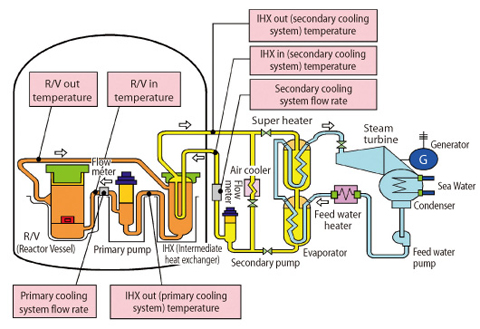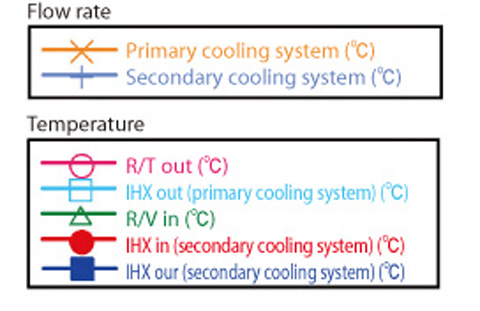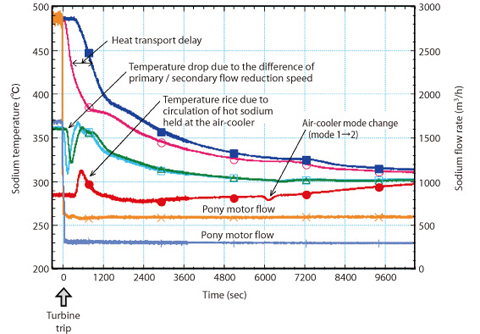
Fig.1-27 "MONJU" components and test points


Fig.1-28 Changes in major process parameters (Plant trip evaluation test)
The system startup test (SST) of "MONJU" has been suspended since the secondary cooling system sodium leak accident on December 8, 1995. However, specific test results have been disclosed to academic organizations (e.g. Atomic Energy Society of Japan), and all results have recently been summarized and disclosed in preparation for the upcoming restart.
Among the test results, this paper will focus on the "Plant trip evaluation test (triggered by turbine trip)" which is one of the typical tests conducted in the power up test phase.
In this test, vacuum failure in the condenser was simulated during 40% rated power operation to induce turbine and reactor trip. The behavior of the plant has been observed during the transient and it has been confirmed that the interlock system can shut down the plant safely . Also the status of each component and the process parameter data were obtained to check details of the plant behavior comprehensively.
In the results of this test, the equipment status, annunciator indications, and plant process parameter values indicate that the safety interlock worked successfully and the plant shut down automatically and safely.
Moreover, detailed data on the plant during the transient was obtained.
The "MONJU" components and test points are shown in Fig.1-27, and the transient data of the major process parameters (temperature & flowrate of the primary and secondary cooling system) in Fig.1-28.
Since the motor of the main circulation pump changes from the main motor to auxiliary motor with the plant trip, the flow rate of primary and secondary cooling system decreases. The primary sodium temperature at the inlet of the reactor vessel decreases temporarily due to the difference in the reduction speed of flow rate between the primary and secondary system, but then it recovers as the primary and secondary system flow rates stabilize at respective levels.
On the other hand, the secondary sodium temperature at the inlet of Intermediate Heat Exchanger (IHX) rises shortly after the event since the high temperature sodium held at the air cooler flows to the IHX when the main flow path is switched from steam generator to air cooler.
Such data from actual plant operation is necessary to confirm performance and complete R&D of "MONJU" itself, and furthermore contributes to future reactor design through the advancement of plant dynamics analysis technique etc.
"MONJU" is currently under modification to add mitigation measures against sodium leak etc, in preparation for restarting the SST. The program will be conducted carefully step by step, reflecting past experience so that we could obtain valuable data.